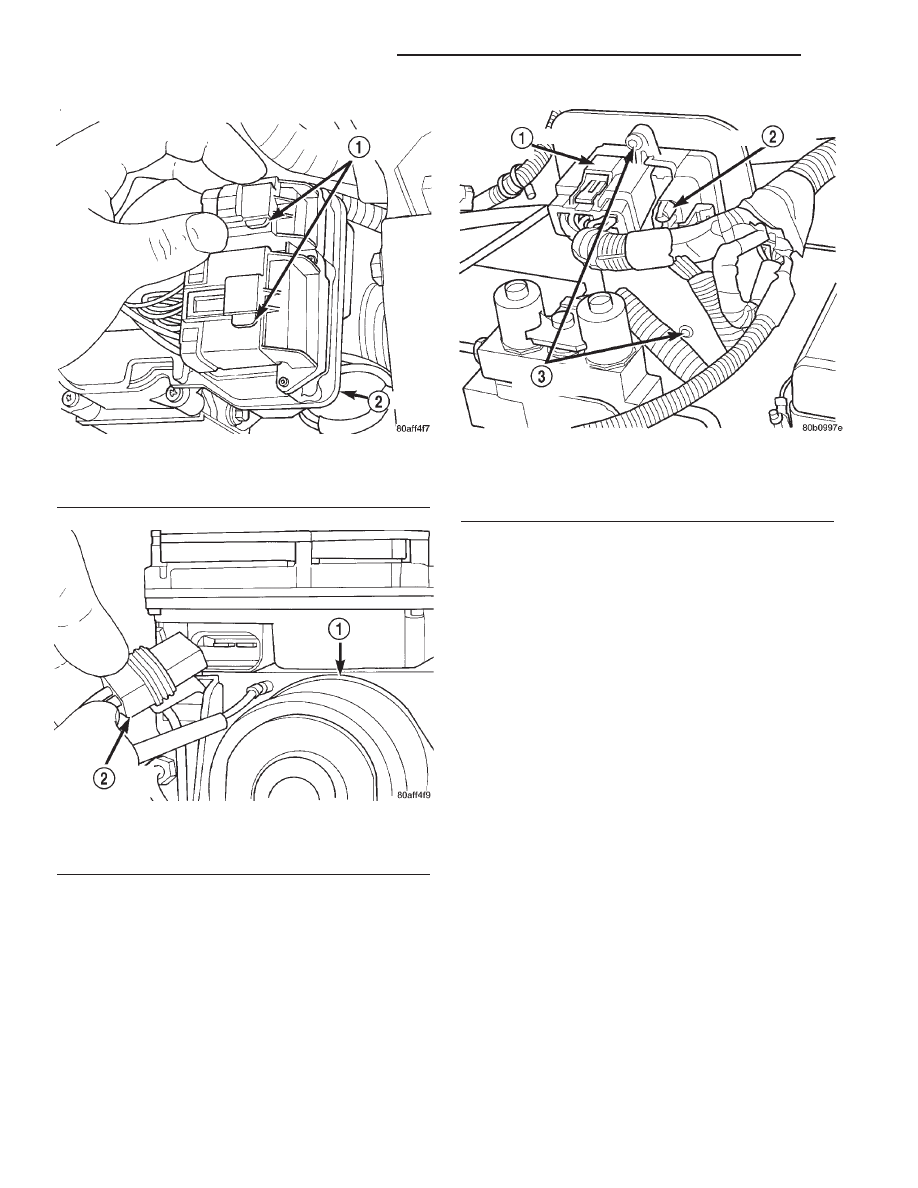Dodge Dakota (R1). Manual - part 290

INSTALLATION
NOTE: If the CAB needs to be replaced, the rear
axle type and tire revolutions per mile must be pro-
gramed into the new CAB. For axle type refer to
Group 3 Differential and Driveline. For tire revolu-
tions per mile refer to Group 22 Tire and Wheels. To
program the CAB refer to the Chassis Diagnostic
Manual.
(1) Position the controller on the bracket.
(2) Install the mounting screws and tighten to 6
N·m (53 in. lbs).
(3) Install the RWAL valve harness connector into
the controller.
(4) Install the CAB harness connector into the con-
troller and push down on the connector lock.
DATA LINK CONNECTOR
DESCRIPTION
The data link connector is located at the lower
edge of the instrument panel near the steering col-
umn.
OPERATION
The 16–way data link connector (diagnostic scan
tool connector) links the Diagnostic Readout Box
(DRB) scan tool or the Mopar Diagnostic System
(MDS) with the Powertrain Control Module (PCM).
Fig. 5 Harness Connector Locks
1 - CONNECTOR LOCK
2 - CAB
Fig. 6 Pump Motor Connector
1 - PUMP MOTOR
2 - PUMP CONNECTOR
Fig. 7 RWAL Controller
1 - CAB CONNECTOR LOCK
2 - RWAL CONNECTOR
3 - MOUNTING SCREWS
8E - 10
ELECTRONIC CONTROL MODULES
AN
CONTROLLER ANTILOCK BRAKE (Continued)